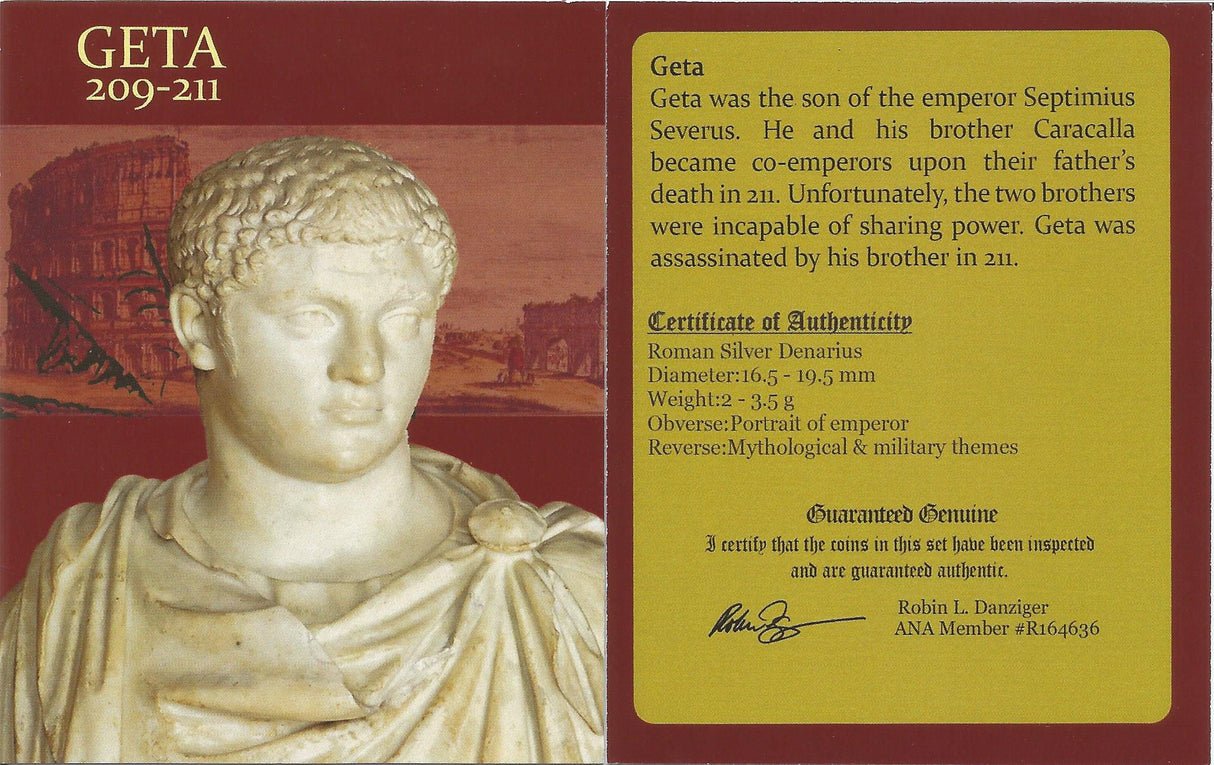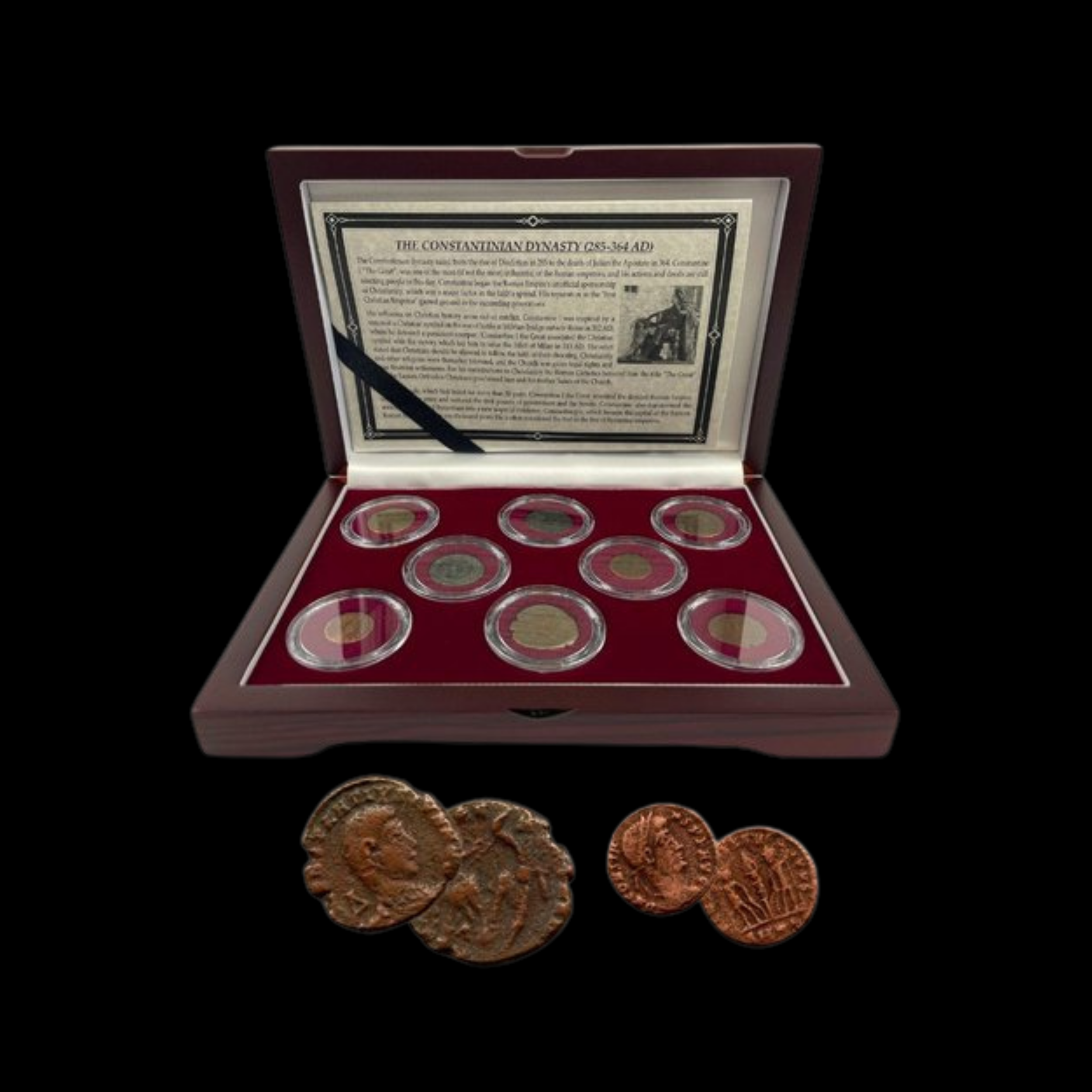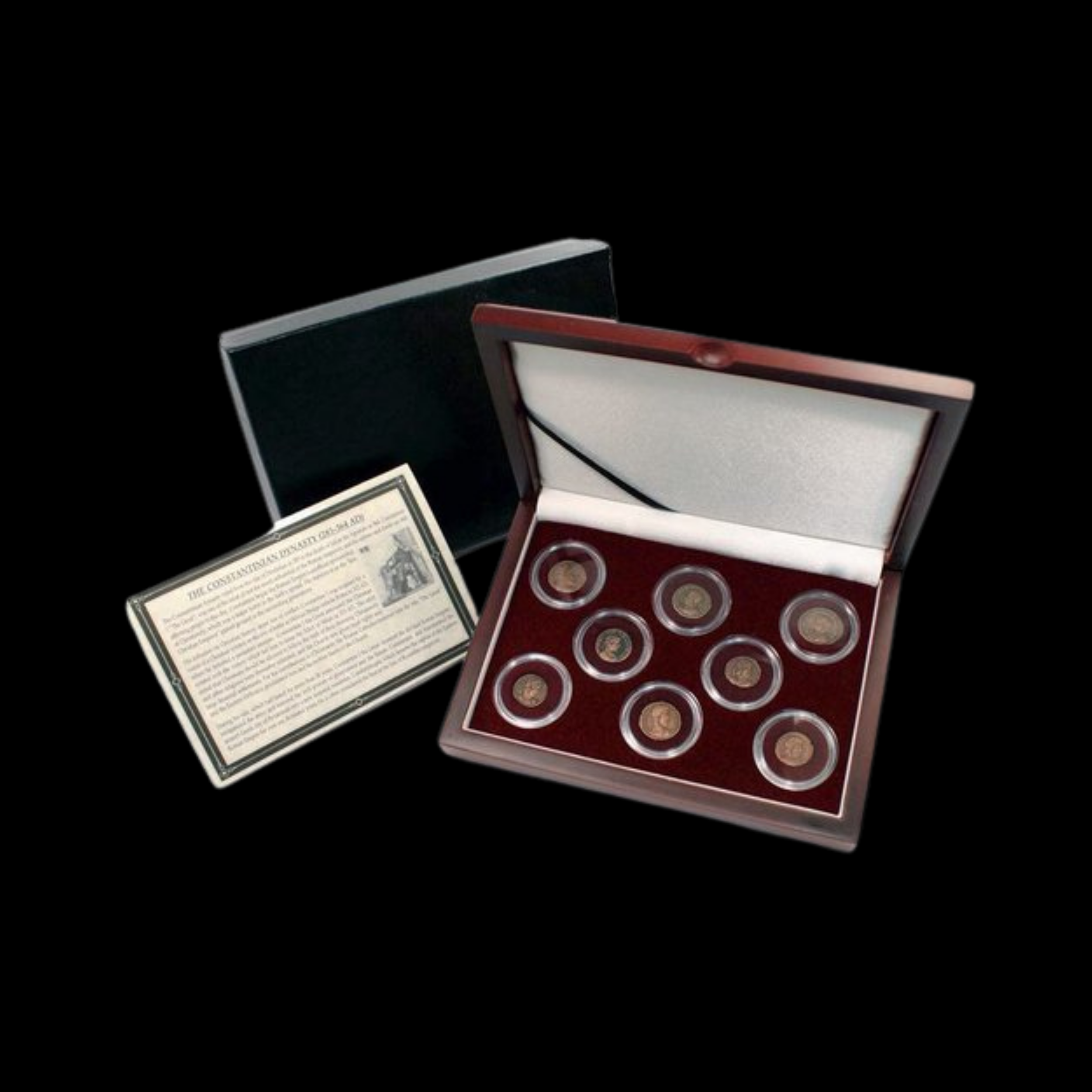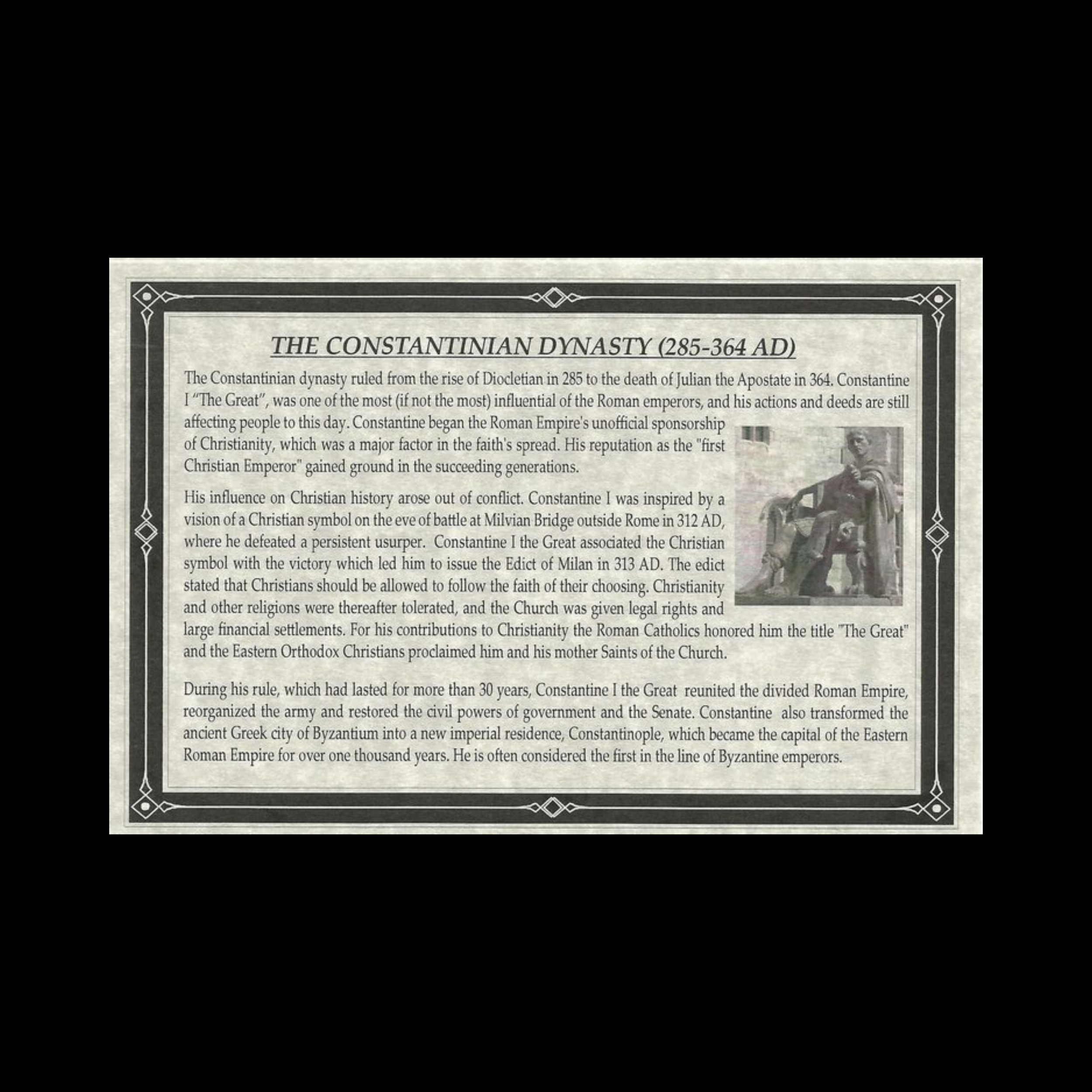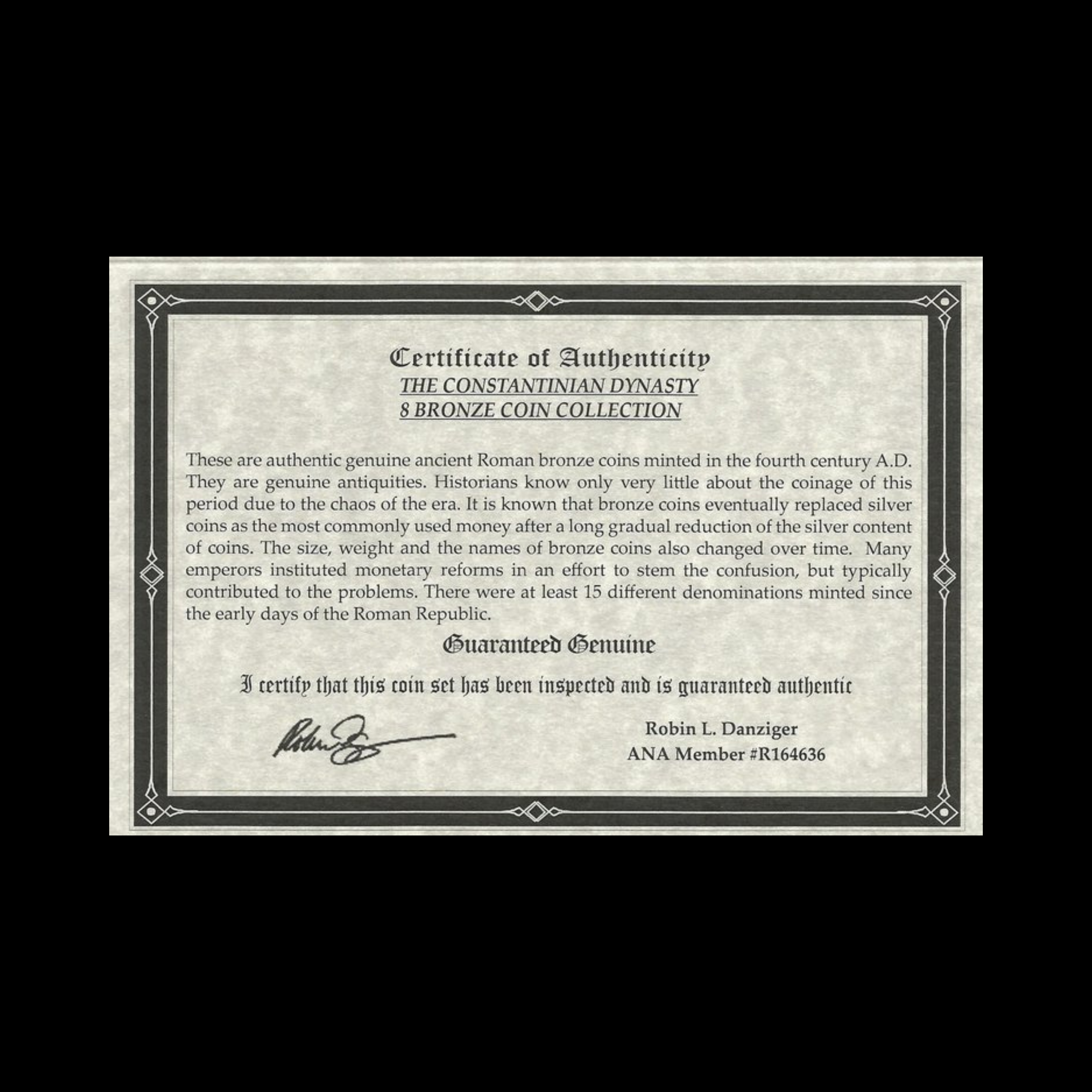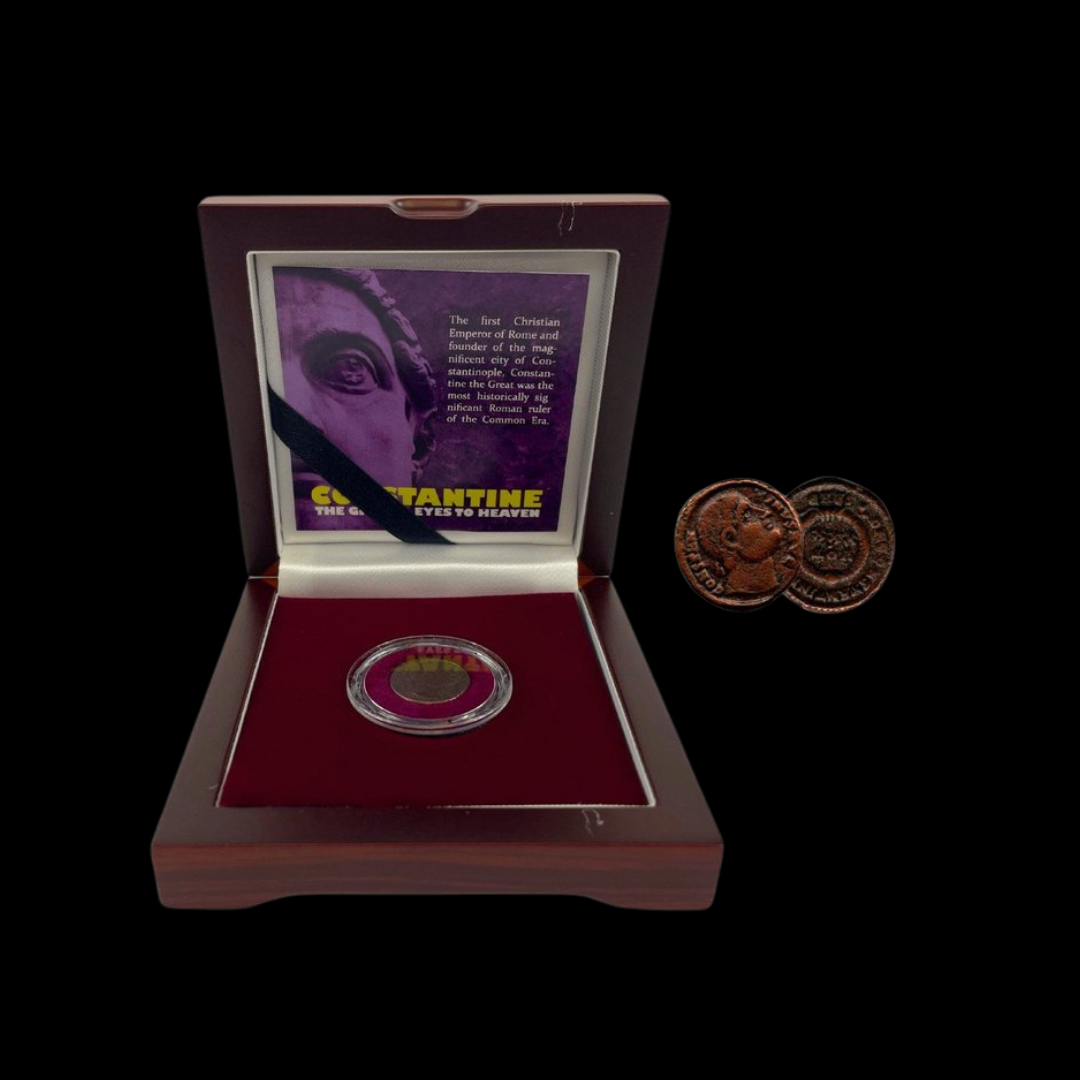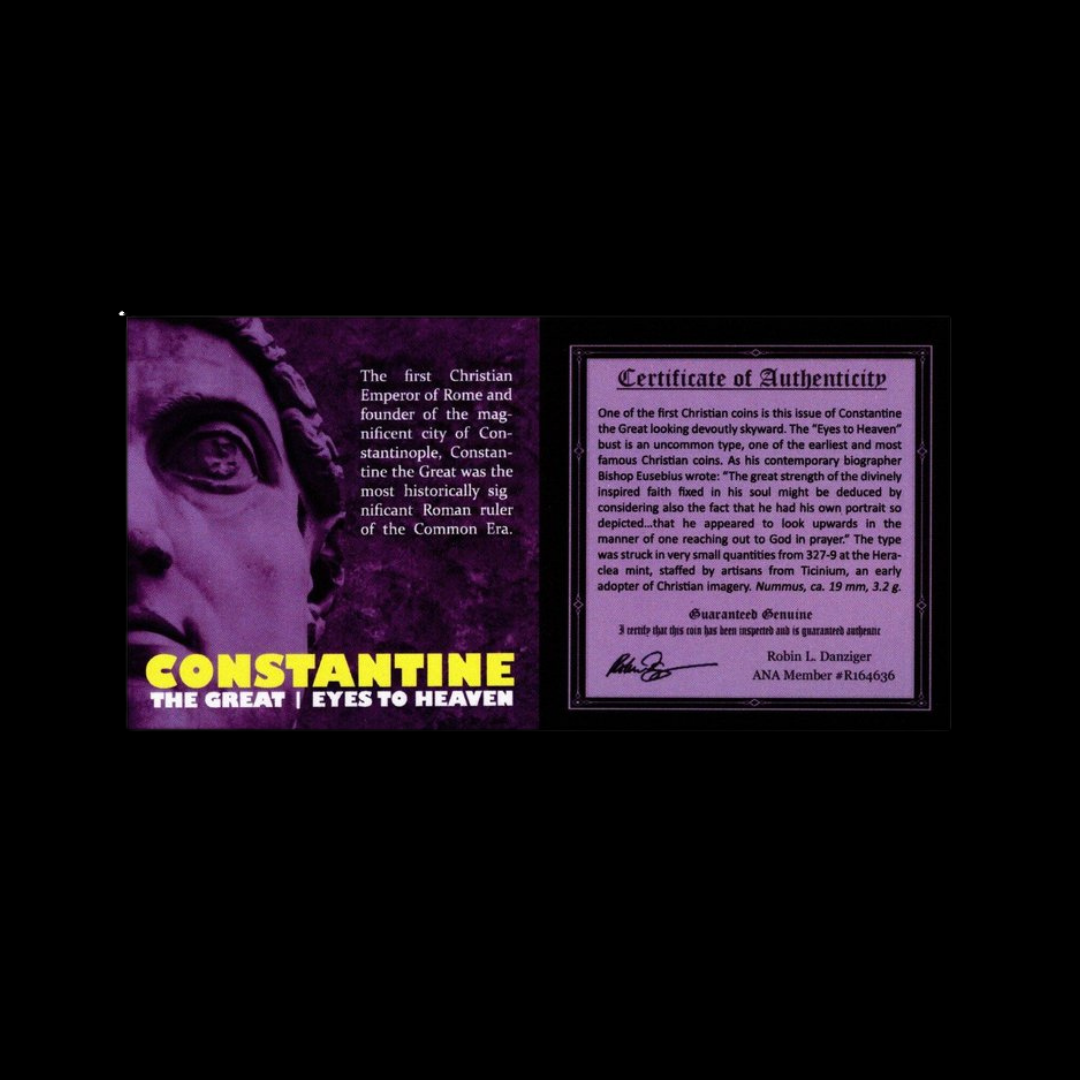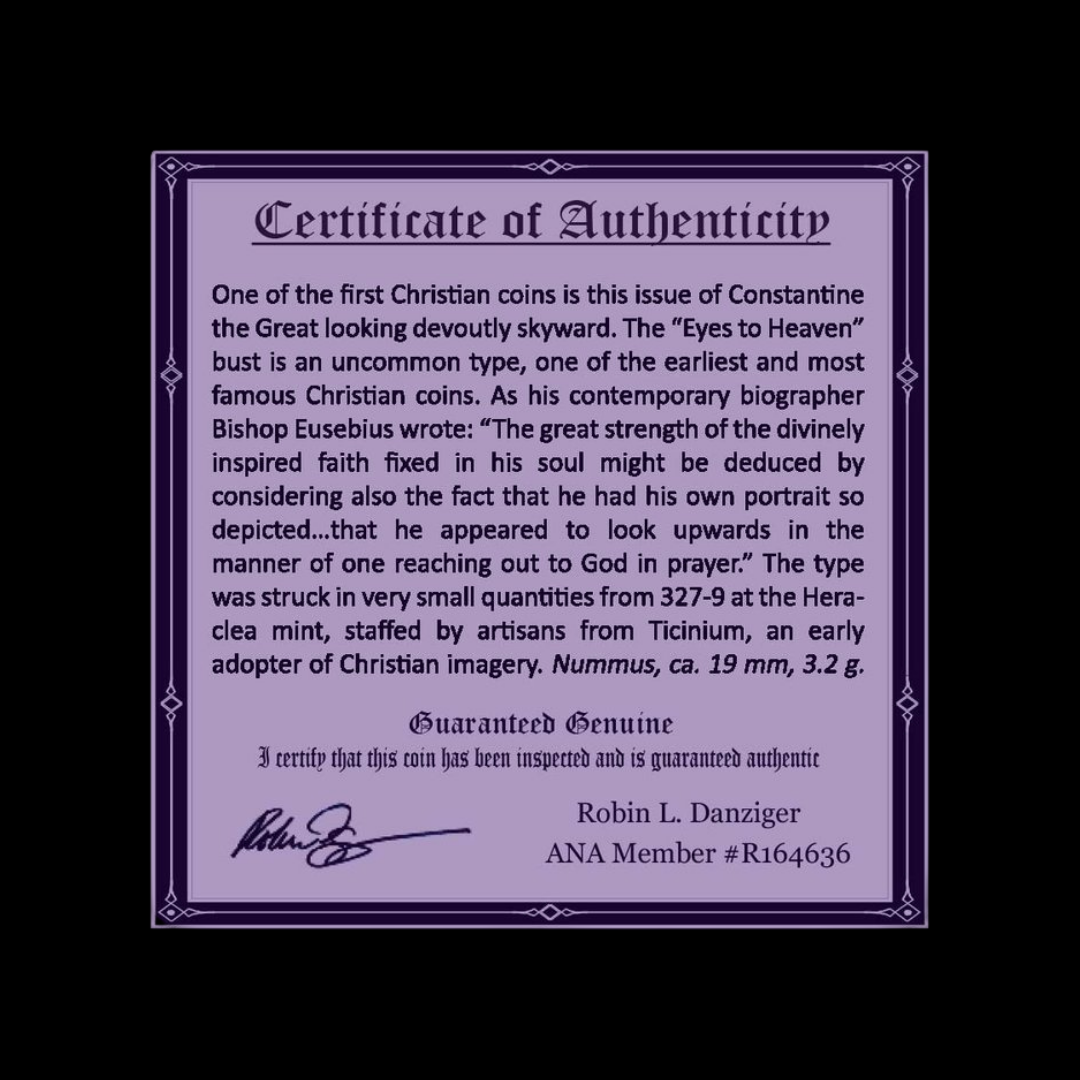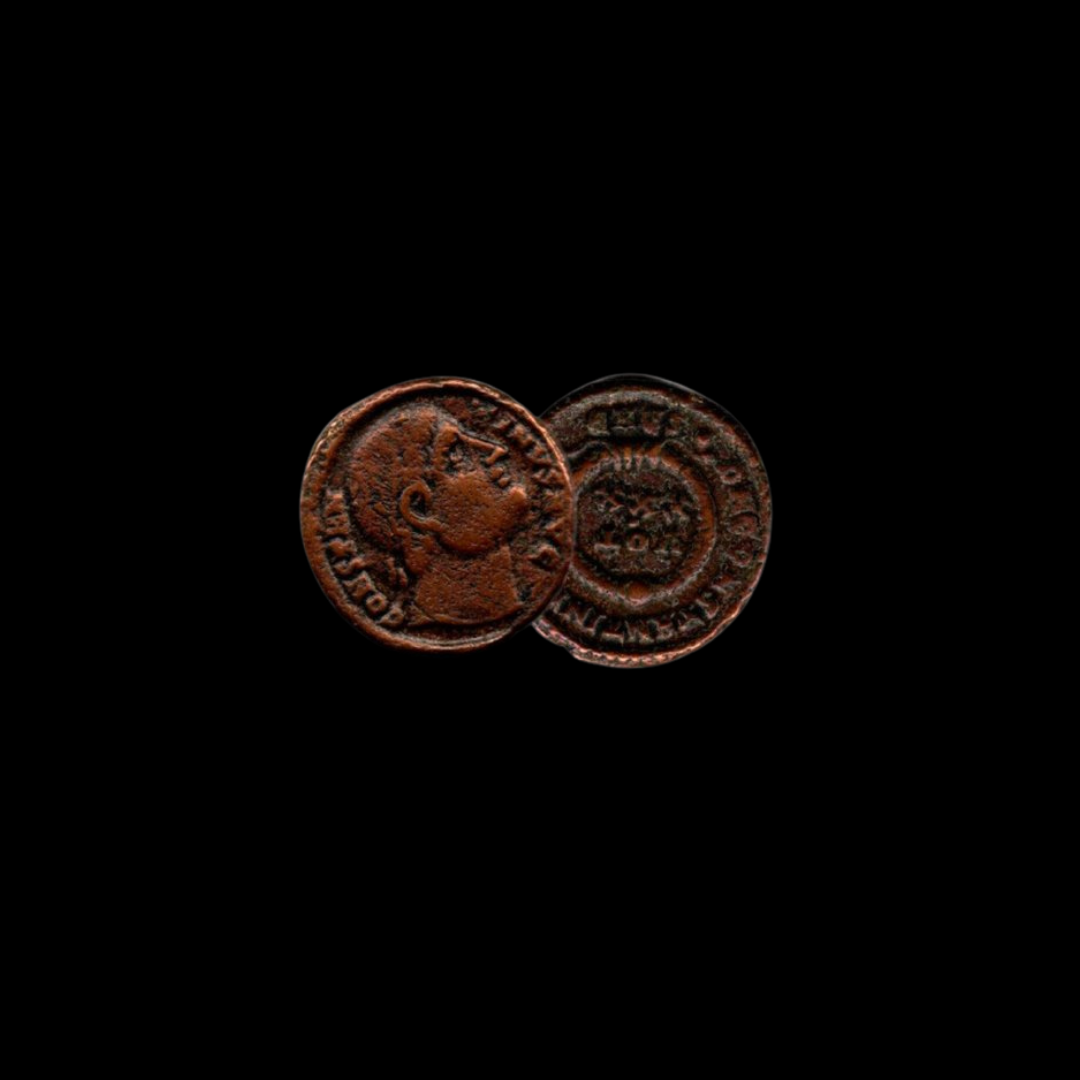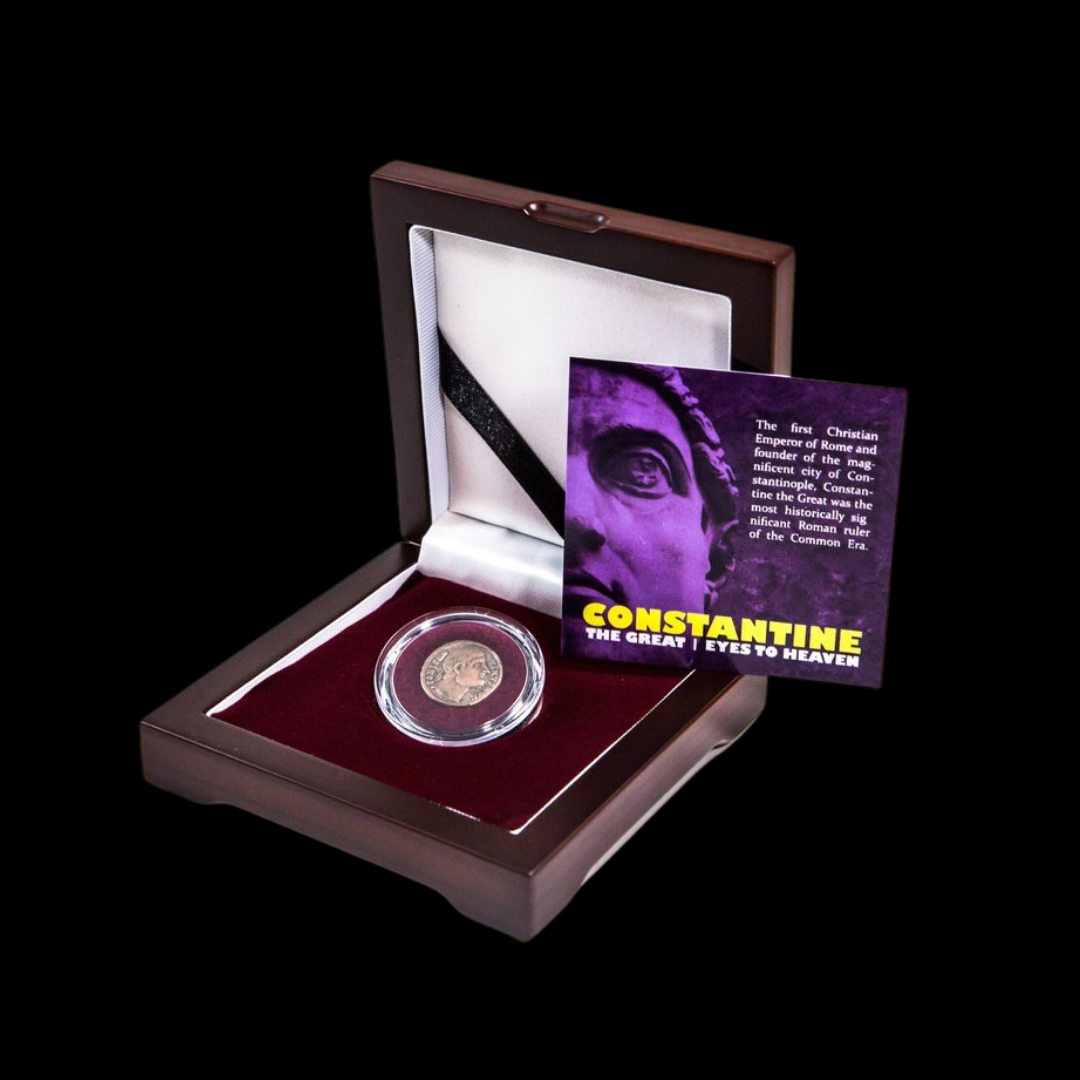 Image 1 of 5
Image 1 of 5

 Image 2 of 5
Image 2 of 5

 Image 3 of 5
Image 3 of 5

 Image 4 of 5
Image 4 of 5

 Image 5 of 5
Image 5 of 5






Constantine I, The Great (Epfig Hoard) Roman AE (about 1,685-1,750 years ago)
This bronze coin from the Epfig Hoard is from the reign of Constantine I (also known as Constantine the Great), one of Rome's most transformative emperors. The Epfig Hoard, discovered in eastern France, contained thousands of Roman coins from this pivotal period in Roman history.
Coin Description:
Front side: Profile portrait of Constantine I wearing either a laurel wreath or imperial diadem, with his name and titles in Latin around the edge
Back side: Likely depicts either Roman military standards, commemorative scenes, or religious symbolism that increasingly reflected Christian influences
Technical Details:
Bronze composition (copper alloy)
AE denomination (referring to bronze coinage)
NGC certified (Numismatic Guaranty Corporation)
Minted between 306-337 CE in various imperial mints
Part of the Epfig Hoard find
Condition: Certified by NGC, specific grade not provided
Historical Significance: This coin represents the revolutionary reign of Constantine I, who unified the Roman Empire after civil wars and made Christianity a legally recognized religion through the Edict of Milan (313 CE). Constantine's monetary reforms included new denominations and imagery that gradually incorporated Christian symbolism. As founder of Constantinople (modern Istanbul, Turkey), he established what would become the capital of the Eastern Roman/Byzantine Empire for over a thousand years, fundamentally reshaping the Mediterranean world.
This bronze coin from the Epfig Hoard is from the reign of Constantine I (also known as Constantine the Great), one of Rome's most transformative emperors. The Epfig Hoard, discovered in eastern France, contained thousands of Roman coins from this pivotal period in Roman history.
Coin Description:
Front side: Profile portrait of Constantine I wearing either a laurel wreath or imperial diadem, with his name and titles in Latin around the edge
Back side: Likely depicts either Roman military standards, commemorative scenes, or religious symbolism that increasingly reflected Christian influences
Technical Details:
Bronze composition (copper alloy)
AE denomination (referring to bronze coinage)
NGC certified (Numismatic Guaranty Corporation)
Minted between 306-337 CE in various imperial mints
Part of the Epfig Hoard find
Condition: Certified by NGC, specific grade not provided
Historical Significance: This coin represents the revolutionary reign of Constantine I, who unified the Roman Empire after civil wars and made Christianity a legally recognized religion through the Edict of Milan (313 CE). Constantine's monetary reforms included new denominations and imagery that gradually incorporated Christian symbolism. As founder of Constantinople (modern Istanbul, Turkey), he established what would become the capital of the Eastern Roman/Byzantine Empire for over a thousand years, fundamentally reshaping the Mediterranean world.
This bronze coin from the Epfig Hoard is from the reign of Constantine I (also known as Constantine the Great), one of Rome's most transformative emperors. The Epfig Hoard, discovered in eastern France, contained thousands of Roman coins from this pivotal period in Roman history.
Coin Description:
Front side: Profile portrait of Constantine I wearing either a laurel wreath or imperial diadem, with his name and titles in Latin around the edge
Back side: Likely depicts either Roman military standards, commemorative scenes, or religious symbolism that increasingly reflected Christian influences
Technical Details:
Bronze composition (copper alloy)
AE denomination (referring to bronze coinage)
NGC certified (Numismatic Guaranty Corporation)
Minted between 306-337 CE in various imperial mints
Part of the Epfig Hoard find
Condition: Certified by NGC, specific grade not provided
Historical Significance: This coin represents the revolutionary reign of Constantine I, who unified the Roman Empire after civil wars and made Christianity a legally recognized religion through the Edict of Milan (313 CE). Constantine's monetary reforms included new denominations and imagery that gradually incorporated Christian symbolism. As founder of Constantinople (modern Istanbul, Turkey), he established what would become the capital of the Eastern Roman/Byzantine Empire for over a thousand years, fundamentally reshaping the Mediterranean world.
Constantine I[g] (Latin: Flavius Valerius Constantinus; 27 February c. 272 – 22 May 337), also known as Constantine the Great, was a Roman emperor from AD 306 to 337 and the first Roman emperor to convert to Christianity.[h] He played a pivotal role in elevating the status of Christianity in Rome, decriminalizing Christian practice and ceasing Christian persecution. This was a turning point in the Christianization of the Roman Empire. He founded the city of Constantinople and made it the capital of the Empire, which it remained for over a millennium.
Born in Naissus, in Dardania within Moesia Superior (now Niš, Serbia), Constantine was the son of Flavius Constantius, a Roman army officer of Illyrian origin who would become one of the four emperors of the Tetrarchy. His mother, Helena, was a woman of low birth, probably from Asia Minor in modern Turkey. Later canonised as a saint, she is credited for the conversion of her son in some traditions, though others believe that Constantine converted her. Constantine served with distinction under the Roman emperors Diocletian and Galerius. He began his career by campaigning in the eastern provinces (against the Persians) before being recalled in the west (in AD 305) to fight alongside his father in the province of Britannia. After his father's death in 306, Constantine was proclaimed as augustus (emperor) by his army at Eboracum (York, England). He eventually emerged victorious in the civil wars against emperors Maxentius and Licinius to become the sole ruler of the Roman Empire by 324.













